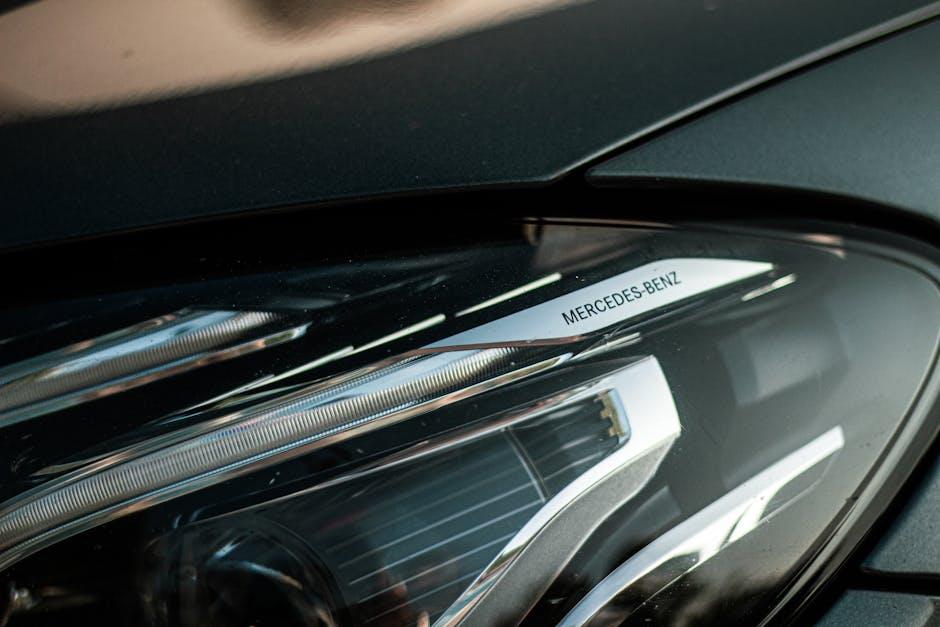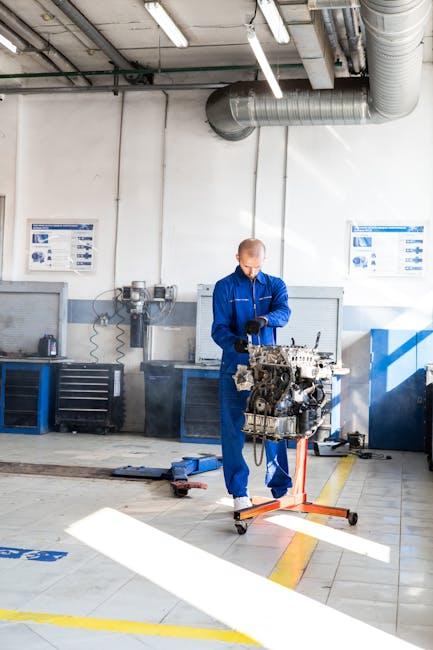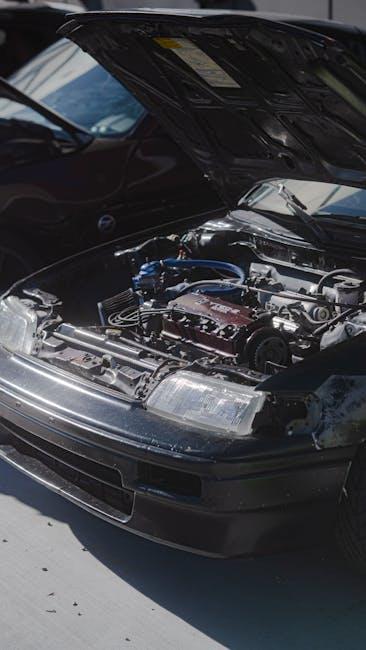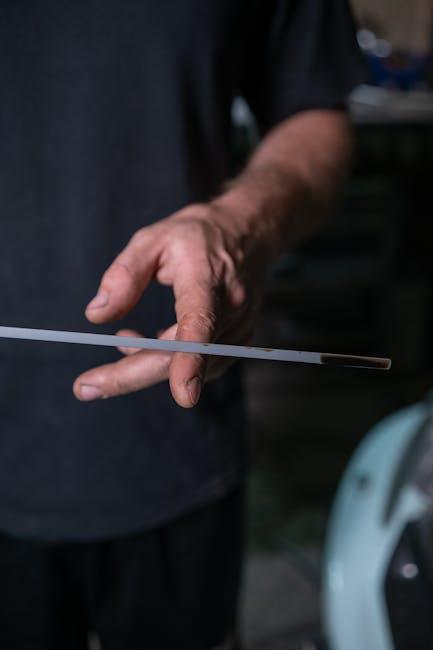When your vehicle refuses to awaken with a simple turn of the key, the culprit often lies hidden beneath the hood in a small but mighty component: the starter motor. This essential part acts as the car’s initial spark, igniting the engine and setting your journey in motion. But how can you be certain it’s working properly before it leaves you stranded? Testing your car’s starter motor might seem daunting at first, but with a bit of guidance and the right approach, anyone can diagnose its health and keep their ride reliable. In this article, we’ll walk you through straightforward methods to check your starter motor, empowering you to troubleshoot with confidence and get back on the road without a hitch.
Table of Contents
- Understanding the Role of the Starter Motor in Your Vehicle
- Common Signs of Starter Motor Problems to Watch For
- Preparing Your Car and Tools for Starter Motor Testing
- Step-by-Step Guide to Performing a Voltage Drop Test
- Interpreting Test Results and Diagnosing Issues
- When to Seek Professional Help for Starter Motor Repairs
- Q&A
- The Conclusion

Understanding the Role of the Starter Motor in Your Vehicle
The starter motor acts as the vehicle’s initial spark of life, transforming electrical energy from the battery into mechanical motion to crank the engine. Without it, the car remains silent, no matter how much you turn the key. This compact yet powerful component is engineered to engage briefly, delivering the torque necessary to rotate the engine’s flywheel until combustion begins. Understanding its role helps you appreciate why a failing starter leads to frustrating no-start conditions, emphasizing the importance of diagnosing this part before jumping to larger engine issues.
Inside the starter motor, an electric motor and solenoid work in harmony: the solenoid bridges the electrical circuit, while the motor spins the pinion gear that meshes with the engine’s flywheel. This precise timing and mechanical synergy ensure your car fires up promptly. Key points to remember include:
- Electrical connection: Vital for power with clean, tight cables.
- Mechanical engagement: Smooth operation of gears is needed to transfer motion.
- Heat and wear resilience: The starter endures intense intermittent use.
| Starter Motor Component | Function |
|---|---|
| Solenoid | Activates electrical circuit to motor |
| Pinion Gear | Engages flywheel to crank engine |
| Electric Motor | Generates rotational force |

Common Signs of Starter Motor Problems to Watch For
If you’ve noticed your vehicle hesitating or completely failing to turn over, it’s a clear indication that your starter motor might be acting up. Unusual sounds, such as a rapid clicking noise or a grinding sound when attempting to start the engine, often hint at mechanical wear or electrical issues within the starter assembly. Additionally, if the dashboard lights flicker or dim significantly during ignition attempts, this could reflect insufficient power reaching the starter motor due to poor connections or a weakening battery.
Other subtle signs include a slow crank or the engine turning over sluggishly before finally starting. Sometimes, your car may not start at all unless you wiggle the steering wheel or apply some pressure to the ignition key, which could signify problems with the starter’s internal solenoid or ignition switch. Keeping an eye on these symptoms early on can save you from an inconvenient breakdown and costly repairs.
- Clicking sounds when turning the key
- Engine cranks slowly
- No response when turning the key
- Dashboard lights dimming
- Intermittent starting issues
| Symptom | Possible Cause | Suggested Action |
|---|---|---|
| Clicking Noise | Faulty starter solenoid | Inspect starter relay and connections |
| Slow Cranking | Weak battery or corroded cables | Test battery and replace cables if needed |
| Grinding Sound | Worn starter gear teeth | Replace starter motor or gear |
| No Start | Electrical fault or dead battery | Check electrical wiring and battery health |

Preparing Your Car and Tools for Starter Motor Testing
Before diving into the testing process, ensure your vehicle is positioned on a flat surface with the parking brake securely engaged. This will provide stability and safety during the procedure. Next, disconnect the negative terminal of your car battery to prevent accidental shorts or electrical surges while working with the starter motor. Safety gear like gloves and eye protection is essential, as you might come into contact with sharp components or battery acid. Once these precautions are in place, gather your testing tools, making sure they are in good condition for accurate and safe diagnostics.
Having the right tools on hand will streamline the testing process and minimize errors. Essential equipment includes:
- Multimeter: To measure voltage and resistance.
- Socket Set: For removing starter motor bolts.
- Test Light: To check electrical circuits.
- Battery Charger: To ensure your battery is fully charged during testing.
Additionally, keep a tidy workspace with adequate lighting to stay efficient. Organizing your tools on a magnetic tray or workbench not only saves time but also reduces the risk of losing small parts. Remember, preparation is key to conducting a successful starter motor test.

Step-by-Step Guide to Performing a Voltage Drop Test
Before diving into the test, gather your essential tools: a digital multimeter, safety gloves, and a helper to turn the ignition. Start by setting your multimeter to DC volts. Connect the positive probe to the battery terminal and the negative probe to the starter motor terminal. Have your assistant crank the engine while you carefully observe the voltage reading. This initial check highlights any excessive voltage drop indicating resistance in the circuit, which can cause your starter motor to malfunction or engage weakly.
Next, move your probe to the other critical points along the starter circuit, such as the battery cable ends and starter solenoid terminal. Look for voltage drops greater than 0.5 volts—an immediate red flag signaling poor connections or corroded wiring. Here’s a quick checklist to keep your test organized:
- Battery to battery cable connection
- Battery cable to starter solenoid
- Starter solenoid to starter motor terminal
Complete this systematic sweep to isolate the weak link in the circuit and ensure reliable starter engagement every time.

Interpreting Test Results and Diagnosing Issues
After performing your starter motor tests, it’s essential to analyze the readings carefully. Voltage drops or a complete lack of voltage can signal wiring issues, such as corroded connections or a weak battery. If the motor spins but the engine doesn’t turn over, this might indicate a faulty starter drive or solenoid. Listen for unusual noises—clicking sounds often point to solenoid problems, while grinding noises could mean worn gears inside the starter. Keeping a detailed record of test values alongside symptoms can help isolate whether the problem lies in the motor itself or elsewhere in the starting system.
Use the table below as a quick reference guide to common test results and what they typically signify:
| Test Result | Interpretation | Suggested Action |
|---|---|---|
| Voltage below 9.6V during start | Battery or cable issues | Check battery health and cable connections |
| Starter motor spins freely | Faulty drive mechanism | Inspect and replace drive if needed |
| Clicking sound but no crank | Solenoid malfunction | Test and possibly replace solenoid |
| No sound or movement | Dead motor or wiring fault | Check wiring, test motor separately |
- Correlate symptoms with test data to avoid misdiagnosis.
- Confirm repeated tests to ensure consistency before replacing parts.
- Document findings for future reference or professional consultation.

When to Seek Professional Help for Starter Motor Repairs
While many starter motor issues can be diagnosed and sometimes resolved with basic tools, there are specific situations where consulting a professional mechanic is crucial. If you notice persistent clicking noises without the engine turning over, or if the starter engages intermittently, it might indicate internal damage or electrical faults that require specialized equipment to diagnose accurately. Additionally, if your car’s battery and connections are in good condition but the starter still fails to function properly, this points to more complex problems best handled by experts.
Some other warning signs include:
- Starter motor overheating or emitting a burning smell
- Unusual grinding noises during startup
- Complete failure to start despite multiple attempts
Below is a quick reference guide to help you decide whether to DIY or seek professional help:
| Symptom | Suggested Action |
|---|---|
| Clicking sound only | Check battery & connections; try basic starter relay tests |
| Grinding noise | Seek professional diagnosis immediately |
| Starter won’t turn at all | Test battery, then consult a professional if issue persists |
| Overheating starter | Stop use; professional repair needed |
Q&A
Q&A: How to Test Your Car’s Starter Motor
Q1: What is the starter motor, and why is it important?
A1: The starter motor is the small but mighty electric motor that gets your engine roaring to life. Without it, turning the key or pushing the button won’t spark the engine’s ignition. It’s essential because it initiates the engine’s combustion process.
Q2: What are common signs that my starter motor might be failing?
A2: Listen for a clicking noise when you start your car but no engine turnover, or a grinding sound indicating the starter gear isn’t engaging properly. If your engine hesitates or doesn’t start at all, the starter motor could be the culprit.
Q3: How can I test the starter motor myself?
A3: First, ensure your car is in park or neutral with the parking brake on for safety. You can perform a simple voltage test using a multimeter at the starter terminals to check for power. Another quick check: tap the starter lightly with a hammer while someone tries to start the car — sometimes, it frees up a stuck motor temporarily.
Q4: Do I need any special tools to test the starter motor?
A4: While a multimeter is the most useful tool for accurate voltage and continuity checks, basic automotive knowledge and some simple hand tools can help you access the starter motor connections. For deeper diagnostics, a professional-grade starter relay or load tester might be needed.
Q5: What should I do if the starter motor tests faulty?
A5: If testing shows your starter motor isn’t drawing current or not engaging, replacement is often the best option. Some starter motors can be rebuilt, but for reliability and peace of mind, a new or remanufactured starter may be a wise investment.
Q6: Can a weak battery mimic starter motor problems?
A6: Absolutely. A drained or weak battery often causes symptoms similar to a bad starter motor, such as slow cranking or clicking sounds. Always check your battery and connections first before blaming the starter motor.
Q7: How frequently should I test or inspect my car’s starter motor?
A7: There’s no strict timeline, but if your car starts smoothly day-to-day, you likely don’t need routine starter testing. However, if you notice any hesitation, strange sounds, or other starting issues, it’s time to investigate before you’re stranded.
Q8: Is it safe to test the starter motor at home?
A8: Yes, with proper precautions. Always disconnect the battery when working with electrical components, use insulated tools, and ensure the car is securely parked. If you’re unsure or uncomfortable, consulting a professional mechanic is the safest bet.
Testing your starter motor can shift you from stranded frustration to empowered driver. With these steps and safety tips in hand, you’re ready to diagnose the heart of your ignition system!
The Conclusion
In the end, diagnosing your car’s starter motor is less about complex mechanics and more about attentive observation and methodical testing. With the right tools and a bit of patience, you can pinpoint starter issues before they leave you stranded. Whether you’re a seasoned DIYer or a curious first-timer, understanding these steps empowers you to keep your vehicle’s heart beating strong every time you turn the key. Remember, a well-tested starter isn’t just about starting your car—it’s about starting your journey with confidence.

